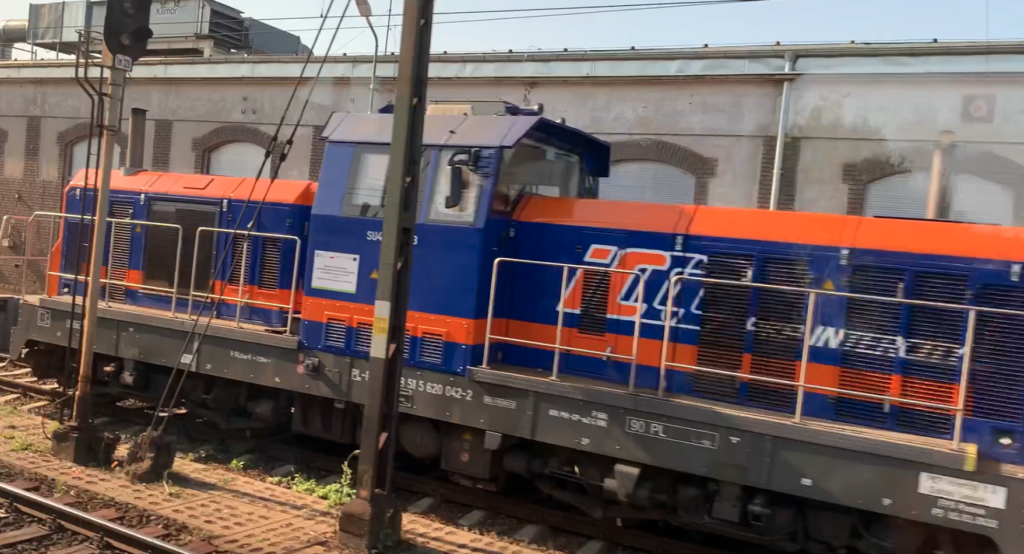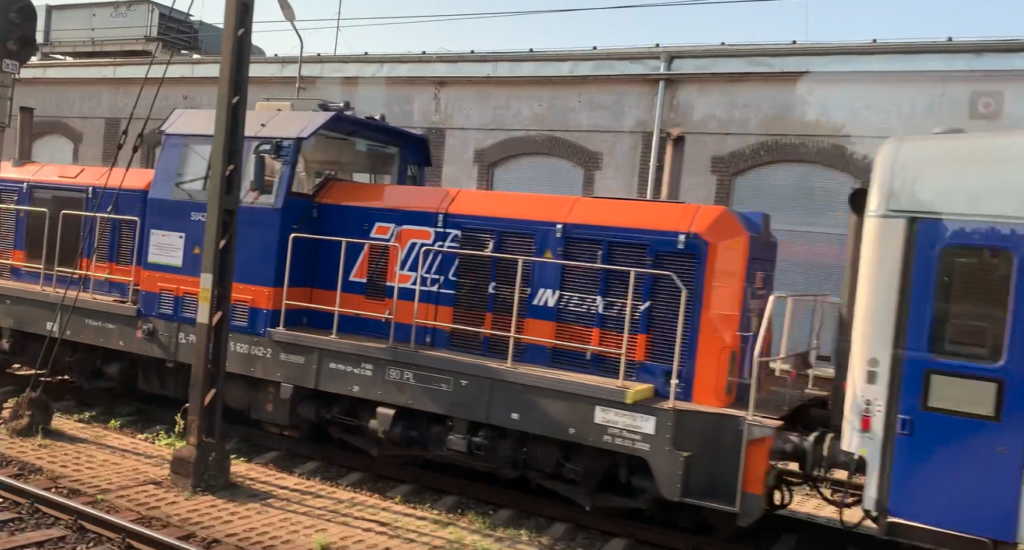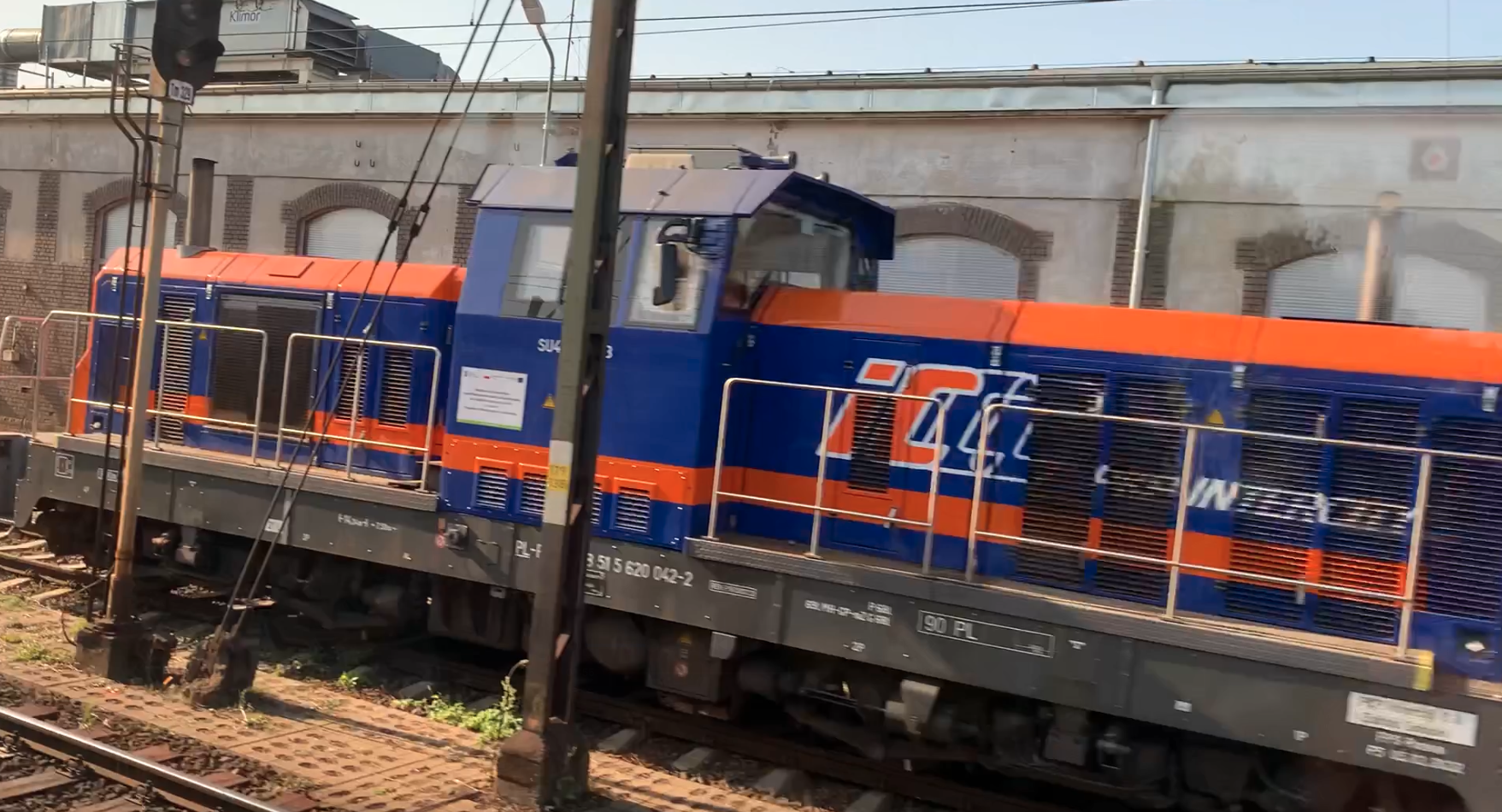Poznań 2025-08-09
H. Cegielski Rail Vehicle Factory SU4220. Modernization of Fablok SM42 locomotives.



After many years of liquidation of Polish Railways, some companies are trying to rise from the ashes and restart production. Among these plants is the Rail Vehicle Factory in Poznań, formerly HCP. H. CEGIELSKI – Rail Vehicle Factory sp. z o.o. is one of the oldest companies producing rolling stock in the world. Throughout its history, it has provided employment for generations of Poznań residents and residents of the Greater Poland region.
The first railway carriages bearing the “Cegielski” HCP (Hipolit Cegielski Poznań) trademark were produced in 1921. Steam locomotive production began in 1926. In 1946, after World War II, the factory was renamed the Wagon Factory, and in 1967, the Locomotive and Wagon Factory. The plant built 13,500 first- and second-class passenger carriages, with couchettes, sleeping cars, dining cars, and luggage compartments. At the same time, approximately 800 electric and diesel locomotives were built, including the renowned SU45 (HCP 301D) locomotives. This was all during the very difficult period of socialism.
As a result of difficult organizational transformations, in 1997, the H. Cegielski – Rail Vehicle Factory Sp. z o.o. was established on the basis of the Locomotive and Wagon Factory. z o.o., which continues its rolling stock manufacturing and service activities. On March 26, 2010, 100% of the shares in H. Cegielski – Fabryka Pojazdów Szynowych Sp. z o.o. were acquired by the Industrial Development Agency S.A.
The plant’s current (2025) offering includes the production of: locomotives, electric multiple unit (EMU) (Feniks, a deep modernization of the EN57, speed 120 km/h), multiple unit (DMU) (Plus, completely new vehicles, up to 160 km/h), trams, railway bogies, as well as the production and modernization of passenger railway cars for speeds up to 200 km/h.
6D-FPS / SU4220 locomotive.
The 6D-FPS locomotive is more commonly known as the SU4220. This latter designation was assigned by PKP InterCity, for which the first 13 locomotives were built. The SU4220 designation follows the designation of the SM4210 locomotive, 10 of which were built at the NEWAG plant in Nowy Sącz.
The 6D-FPS locomotive, like the SM4210, has two generators with a total output of 960 kW. The drive allows for operation on one or two generators, meaning the power can be adjusted to any conditions. The technology used meets STAGE V standards. The locomotive not only offers excellent performance and low diesel fuel consumption, but also low exhaust emissions. The locomotive meets stringent exhaust emission standards, making it environmentally friendly. Drivers are assured of comfort and safety. A modern, air-conditioned cab provides optimal working conditions even on long routes, and an ergonomically designed workstation guarantees excellent visibility and control of the locomotive. Advanced systems such as ABS, an anti-skid system when starting, and a crash buffer system ensure the safety of both the driver and the transported loads, making driving the 6D-FPS locomotive a pure pleasure and a guarantee of safety. The air-conditioned cab ensures comfortable working conditions for the crew at any time of year. The 6D-FPS locomotive is a true multi-purpose vehicle. Designed for shunting, it can also haul freight trains over long distances, making it an exceptionally versatile vehicle. The locomotive is capable of operating in multiple traction. Advanced on-board diagnostic systems enhance efficiency and operational reliability. Automated mode switching provides full control over the locomotive, allowing it to be optimally adapted to transport conditions. Operating modes can be switched while in motion. The locomotive has a 3 kV DC power supply for the passenger cars, allowing them to be heated during the autumn and winter seasons. Microprocessor control improves the vehicles’ traction properties and reduces fuel consumption. These solutions reduce noise and vibration, both those emitted into the environment and those that impact the work of the locomotive’s drivers. PKP InterCity planned to use the modernized SU4220 locomotives for both shunting and light passenger trains on non-electric lines. They will also be able to operate trains in emergency situations, such as those related to traction network damage, and for seasonal trains running on non-electrified lines. Typically, passenger trains on these lines consist of 3-4 carriages, and travel speeds do not require speeds exceeding 90 km/h.
The first 6D-FPS vehicle was built in April 2021. Vehicle SU4220-001 underwent tests, including on the Poznań Główny – Nowy Tomyśl – Poznań Główny route. Vehicle SU4220-002 was unveiled in September 2021 at the Gdańsk Trade Fair. The contract was signed in spring 2018. The contract value, which included the conversion of one SM42 locomotive into an SU4220 vehicle, was PLN 7 million gross. The total contract between InterCity and FPS amounts to PLN 90.3 million. On January 19, 2022, PKP InterCity took delivery of the first two vehicles. In total, 13 locomotives of this type will be delivered to the carrier. The third and fourth locomotives were handed over on January 30, 2022, and the remaining locomotives were scheduled for delivery by the end of September 2022.
One of the first SU4220-002 locomotives malfunctioned at the end of its fourth week of operation, which was likely to happen with such a new product. But of course, the Polish-language press exploited this fact to attack the Poznań Rail Vehicle Factory. It was reported that the locomotive had caught fire. The vehicle suffered a defect on February 14, 2022, while operating an InterCity Hetman train between Wrocław and Zielona Góra. PKP Intercity stated that reports of a fire were exaggerated. The locomotive crew operated properly, and there was no threat to the crew or passengers. The locomotive was taken to the FPS service center in Poznań. It turned out that a contactor was damaged, causing smoke to appear. The truth is that these media outlets are in German hands and are lobbying for German locomotives, which are not only very expensive but also do not meet Polish standards. There is no service center in Poland, and the generators used have emergency gears. The first four locomotives were commissioned in Wrocław. They operated, among others, the InterCity Hetman Wrocław – Żary – Żagań – Zielona Góra and Wrocław – Polanica trains.
The first vehicle, designated SU4220-001, was based on the SM42-033 locomotive chassis. It currently has the EVN number: 98 51 5 620 040-6 (PL-PKPIC) and the factory number 6D-7449/1967. The locomotive was built in 1967 at the Fablok factory in Chrzanów. The new vehicle underwent tests at the PKP Intercity Western Plant in Poznań. The locomotive was then transferred to Wrocław. In 2024, the vehicle was transferred to the PKP Intercity Central Plant in Warsaw. In 2025, the vehicle was transferred to the PKP Intercity Northern Plant in Gdynia. It was then transferred to the Szczecin Zaleskie Łęgi station, returning to the PKP Intercity Western Plant in Poznań in June 2025. It features the classic PKP Intercity livery: blue and orange stripes. Vehicle number SU4220-003 was a former SM42-058 locomotive, EVN number: 98 51 5 620 042-2 (PL-PKPIC), serial number 6D-7569/1967. The new locomotive was officially taken over on March 5, 2022, by PKP Intercity West Plant in Poznań. It was assigned to Wrocław. In September 2022, it was transferred to PKP Intercity Central Plant in Warsaw. In January 2023, it was returned to PKP Intercity West Plant in Poznań. It features the classic PKP Intercity livery: blue and orange stripes.
SU4220 locomotives operate, among others, TLK Kormoran trains on the Polanica Zdrój – Nysa – Katowice – Warsaw – Olsztyn route. The locomotives are operated interchangeably with SU4210 locomotives, also known as the Kiosk. These locomotives operate on the following routes: Wrocław – Kudowa-Zdrój, Wrocław – Polanica, Rawa Ruska – Lublin Główny (TLK 765 Wisłok), Łeba – Lębork (TLK 42 Wydmy), Lębork – Łeba (TLK 35190 Korsarz), Lębork – Łeba (TLK 50150 Sarbsko, TLK 50153 Gardno), Gdynia – Kostrzyn (TLK 58110 Bory Tucholskie).
T-T SU4220 specifications: Axle configuration: Bo′Bo′. Wheel diameter: 1.10 m. Total length: 14.24 m. Width: 3.17 m. Weight: 74,000 kg. Fuel tank capacity: 2,840 liters. Operating speed 90 km/h. Power of two generators 960 kW (1,305.24 HP). Power of one generator 480 kW (652.62 HP). Tractive effort 228 kN. Electric transmission. Oerlikon brake system.
Written by Karol Placha Hetman
